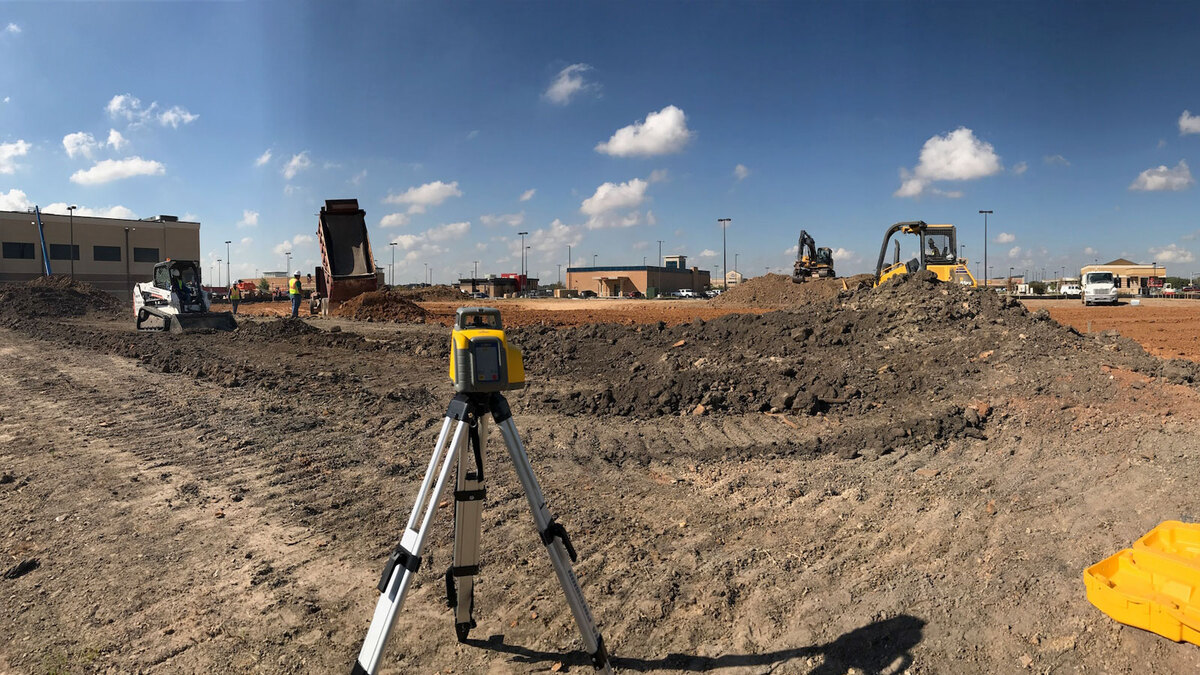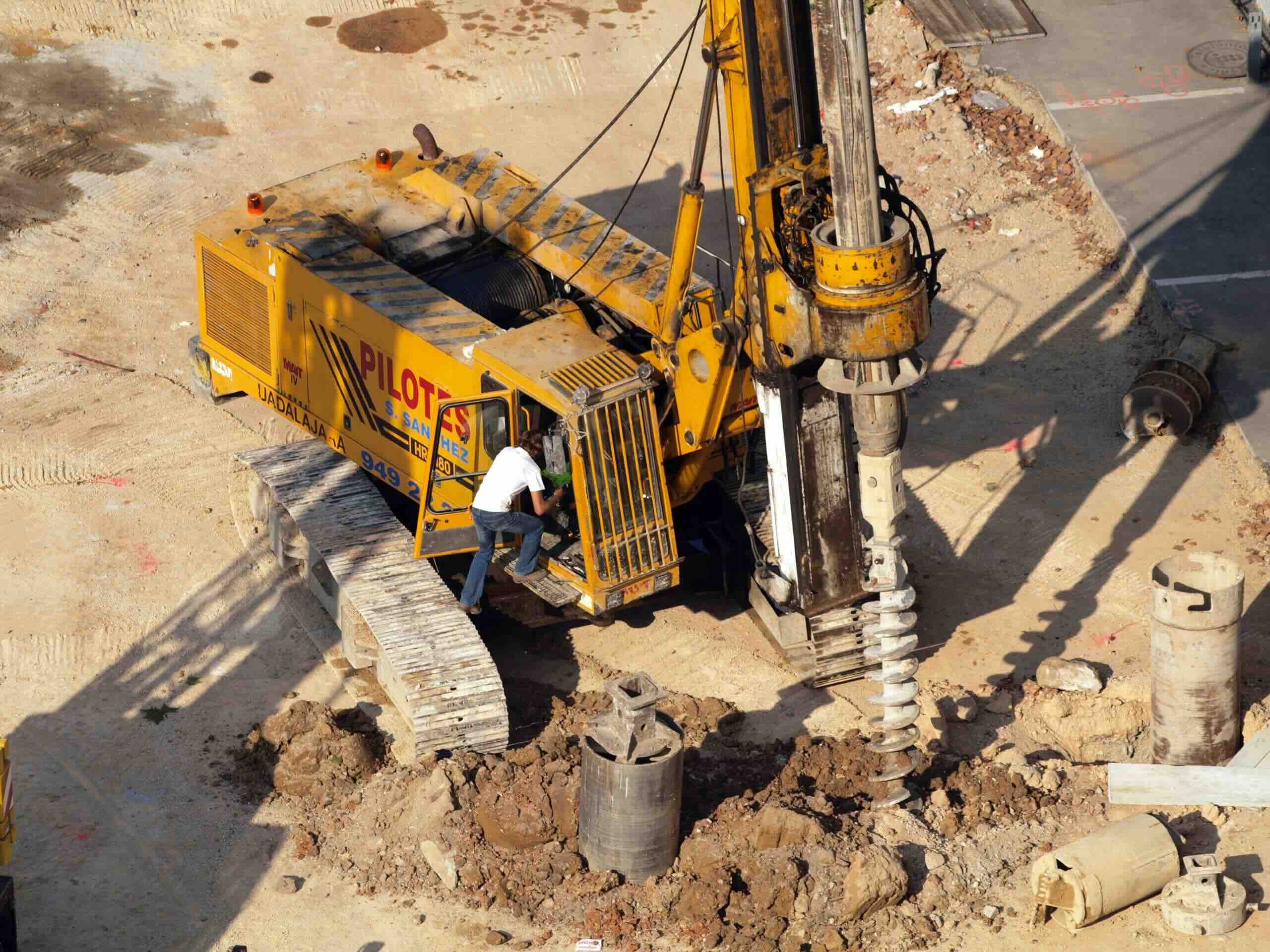Home>diy>Building & Construction>What Is Retention In Construction?


Building & Construction
What Is Retention In Construction?
Modified: December 7, 2023
Understand the concept of retention in building construction and its significance. Learn how it ensures structural stability and safety in construction projects.
(Many of the links in this article redirect to a specific reviewed product. Your purchase of these products through affiliate links helps to generate commission for Storables.com, at no extra cost. Learn more)
Introduction
Welcome to the world of construction, where buildings rise high and dreams take shape. The process of constructing a building involves meticulous planning, precise execution, and diligent management. It is an industry that demands exceptional attention to detail, adherence to strict timelines, and the ability to manage various stakeholders.
One crucial aspect of construction projects that often goes unnoticed is retention. In the context of construction, retention refers to the practice of withholding a portion of the contract payment from the contractor until the completion of specific milestones or defects rectification.
Typically, a percentage of the contract value, known as retention money, is kept as a form of security against possible defects or non-compliance with the terms and conditions of the contract. This retention amount is released to the contractor upon meeting the specified requirements, usually after a predefined defect liability period.
While retention is a common practice in the construction industry, it is essential to understand its significance, types, process, and the benefits it brings to construction projects. In this article, we will delve into the world of retention in construction and dissect its various aspects.
So, if you are curious to explore how retention plays a crucial role in construction projects, read on as we unravel the intricacies of this practice.
Key Takeaways:
- Retention in construction acts as a financial safeguard, ensuring quality work, contractual compliance, and dispute resolution. It promotes professionalism and accountability, benefiting both clients and contractors.
- Effective retention management requires clear contracts, open communication, and timely defect rectification. Despite challenges like cash flow and disputes, best practices can streamline the process for successful project completion.
Read more: How Does Retention Work In Construction
Definition of Retention in Construction
In the realm of construction, retention refers to the practice of holding back a percentage of the contract payment from the contractor until specific conditions are met. It acts as a safeguard for the client against potential defects, non-compliance, or incomplete work.
The retention amount, usually a percentage of the contract value, is withheld by the client and serves as a form of security. It ensures that the contractor remains accountable to complete the project satisfactorily before receiving the full payment.
The purpose of retention in construction is twofold:
- Ensure Compliance: Retention acts as a mechanism to encourage contractors to fulfill their contractual obligations, meet quality standards, and adhere to project specifications. By withholding a portion of the payment, clients have leverage to ensure that the work is completed as agreed upon.
- Rectify Defects: Retention also acts as a financial cushion for clients in case any defects or non-compliance issues arise during the construction process. The withheld amount provides funds to rectify these issues without incurring additional costs or delays.
It is worth noting that retention is a common practice in the construction industry and is included in the contract agreement between the client and the contractor. The specific terms and conditions regarding the retention, including the percentage to be withheld and the release criteria, are typically outlined in the contract document.
Now that we have a clear understanding of what retention entails in the construction industry, let us explore why it is of utmost importance in construction projects.
Importance of Retention in Construction Projects
Retention plays a vital role in ensuring the successful completion of construction projects. Let us explore why retention is of utmost importance in the construction industry:
- Quality Assurance: By withholding a portion of the contract payment, retention ensures that contractors are motivated to deliver high-quality work. It serves as an incentive for contractors to adhere to project specifications, industry standards, and building codes. The prospect of receiving the retained funds upon completion encourages contractors to pay attention to detail and maintain quality throughout the construction process.
- Contractual Compliance: Retention acts as a powerful tool to ensure that contractors fulfill their contractual obligations. By withholding a percentage of the payment, clients have leverage to enforce timely completion, adherence to project milestones, and compliance with terms and conditions. This helps maintain transparency and accountability throughout the construction project.
- Financial Protection: Retention provides clients with financial security against potential defects or non-compliance issues that may arise during or after the construction process. The withheld funds can be used to rectify any issues, ensuring that the project meets the required standards and specifications. This financial buffer protects the client from incurring additional costs or delays due to the contractor’s negligence.
- Dispute Resolution: In the unfortunate event of a dispute between the client and the contractor, retention can serve as a negotiation tool. The withheld amount gives the client leverage to resolve conflicts and reach a mutually beneficial resolution. It provides a platform for discussions where both parties can work towards resolving their differences and ensuring the project’s successful completion.
- Peace of Mind: For clients, retention provides peace of mind throughout the construction process. It ensures that contractors have a vested interest in delivering a quality project on time and within budget. With the knowledge that a portion of the payment is being withheld, clients can trust that their investment is protected, and the project will be completed to their satisfaction.
The importance of retention in construction projects cannot be understated. It serves as a mechanism to uphold quality, maintain contractual compliance, provide financial protection, facilitate dispute resolution, and offer peace of mind to all stakeholders involved in the construction process.
Now that we understand the significance of retention, let us explore the different types of retention commonly practiced in the construction industry.
Types of Retention in Construction
In the construction industry, there are primarily two types of retention that are commonly practiced:
- Retention on Interim Payments: This type of retention involves withholding a percentage of each interim payment made to the contractor throughout the construction project. The retained amount is typically a specific percentage of the contract value and serves as a guarantee against any potential defects or non-compliance. The retained funds are released to the contractor upon the completion of the project or after the specified defect liability period.
- Final Retention: Final retention is the withholding of a percentage of the final payment due to the contractor until specific conditions are met. This type of retention is typically associated with the final completion of the project and the issuance of the Certificate of Practical Completion. The retained amount acts as security to cover any outstanding defects or issues that need to be rectified by the contractor during the defect liability period. Once these conditions are fulfilled, the final retention is released to the contractor.
Both types of retention, interim and final, serve different purposes in construction projects and are designed to ensure compliance, maintain quality, and provide financial protection to the client. These retention practices create a system of checks and balances that encourage contractors to meet their contractual obligations and deliver a satisfactory project.
It is important to note that the specific percentage retained and the release criteria for both types of retention can vary depending on the project and the contract agreement. It is essential for all parties involved to clearly define and document these details to avoid any ambiguity or disputes.
Now that we have explored the different types of retention, let us delve into the process of managing retention in construction projects.
Retention Process in Construction
The process of managing retention in construction projects involves several steps that ensure proper administration and release of the retained funds. Let’s explore the typical retention process:
- Contract Agreement: The retention process begins with the inclusion of retention terms in the contract agreement between the client and the contractor. The percentage to be retained, the conditions for its release, and the defect liability period are clearly defined in this document.
- Interim Payments: During the construction project, the contractor submits interim payment applications based on the completed work milestones. The client makes payments for the completed work, with a portion of each payment being withheld as interim retention.
- Defect Liability Period: Once the construction project is completed, a defined defect liability period begins. This period allows the client to identify and rectify any defects or non-compliance issues that may arise. The retention funds act as a financial security net to cover the cost of these rectification works. The defect liability period is typically specified in the contract agreement.
- Defects Rectification: During the defect liability period, the client notifies the contractor of any identified defects or non-compliance issues. The contractor is then responsible for rectifying these issues within the agreed-upon timeframe.
- Inspection and Certification: Once the defects have been addressed, the client conducts a final inspection to ensure that all requirements have been fulfilled. If the project meets the specified standards, a Certificate of Practical Completion is issued.
- Release of Retention: Upon the issuance of the Certificate of Practical Completion and the completion of the defect liability period, the retained funds are released to the contractor. The release process may involve submitting appropriate documentation, such as completion certificates, defect rectification certificates, and any other required paperwork.
It is crucial to follow a systematic and well-documented retention process to ensure transparency, fairness, and the successful completion of construction projects. Effective communication and collaboration between the client and the contractor throughout the retention process are key factors in its smooth execution.
Now that we understand the retention process, let’s move on to explore the benefits that retention brings to construction projects.
Retention in construction refers to the practice of withholding a portion of a contractor’s payment until the work is completed to the satisfaction of the client. This is a common practice to ensure that the contractor fulfills their obligations and delivers quality work.
Read more: What Is Pre-Construction In Construction
Benefits of Retention in Construction
The implementation of retention in construction projects offers a range of benefits for all parties involved. Let’s explore some of the key advantages:
- Quality Control: Retention ensures that contractors are incentivized to deliver high-quality work. By withholding a portion of the payment, clients have leverage to enforce adherence to project specifications, industry standards, and building codes. This helps maintain the overall quality of the construction project.
- Contractual Compliance: Retention acts as a mechanism to ensure that contractors fulfill their contractual obligations. It serves as a financial incentive for contractors to complete the work on time, meet project milestones, and comply with the terms and conditions of the contract. This helps maintain transparency, accountability, and a smooth workflow throughout the construction project.
- Financial Security: Retention provides clients with a buffer against potential defects or non-compliance issues. The retained funds can be utilized to rectify any identified issues during the defect liability period without incurring additional costs or delays. This financial security provides peace of mind to clients and protects their investment in the construction project.
- Dispute Resolution: In the case of disputes or disagreements between the client and the contractor, retention can act as a negotiation tool. It provides a common ground for both parties to resolve their differences and find mutually acceptable solutions. The withheld amount gives the client leverage, encouraging effective communication and collaboration to reach a resolution.
- Encourages Professionalism: Retention fosters an environment of professionalism and accountability in the construction industry. Contractors are motivated to deliver the project to the highest standards to receive the retained funds. This encourages a commitment to quality workmanship, meeting deadlines, and maintaining positive client relationships.
- Client Satisfaction: The structured retention process helps ensure that the project meets the expectations of the client. With the knowledge that a portion of the payment is being withheld, clients can trust that their investment is protected and that the contractor has a vested interest in delivering a satisfactory outcome. This results in increased client satisfaction and long-term relationships.
The benefits provided by retention extend beyond financial security and quality control. It promotes transparency, accountability, and professionalism, creating an environment conducive to successful construction projects. By implementing retention practices, both clients and contractors can experience these advantages and contribute to the overall success of the project.
Now, let’s move on to the challenges that may arise in the management of retention in construction.
Challenges of Retention in Construction
While retention is a valuable practice in construction projects, it is not without its challenges. Let’s explore some of the common challenges that may arise in the management of retention:
- Cash Flow: Retention can impact the contractor’s cash flow, especially for smaller businesses. With a portion of the payment being withheld, contractors may face challenges in managing their ongoing expenses, purchasing materials, and paying subcontractors and suppliers.
- Dispute Resolution: Disagreements and disputes can arise between the client and the contractor regarding the release of retention. These disputes may stem from differences in the interpretation of contract terms, disagreement over the completion of work, or issues with defect rectification. Resolving these disputes can lead to delays and impact the overall project timeline.
- Contractual Ambiguities: Ambiguities or lack of clarity in the contract agreement can lead to confusion about the retention terms. Vague language, undefined release criteria, or incomplete documentation may result in disagreements and disputes between the client and the contractor.
- Administration and Documentation: The proper administration and documentation of retention can be a complex task. It requires meticulous record-keeping, including the submission and verification of certificates, completion documents, and defect rectification records. Failure to maintain accurate records can result in delays in the release of retention.
- Non-Compliance with Contractual Obligations: If contractors fail to meet their contractual obligations, the release of retention can be delayed or even withheld. This can occur in situations where work milestones are not achieved, project specifications are not met, or required documentation is not provided. Non-compliance issues can lead to strained relationships between the client and the contractor.
- Impact on Subcontractors: Retention practices can also affect subcontractors and suppliers involved in the construction project. Delayed release of retention can hamper their cash flow and ability to deliver services or materials. Ensuring prompt payment to subcontractors and suppliers is crucial to maintain a smooth workflow and avoid disruptions.
While these challenges may arise, they can be mitigated through effective communication, cooperation, and proper contract management. Clear and well-defined contractual agreements, regular progress meetings, and prompt resolution of disputes can help address these challenges and ensure the successful management of retention in construction projects.
Now that we have explored the challenges, let’s move on to discuss best practices for effective retention management in construction.
Best Practices for Retention Management in Construction
Effectively managing retention in construction projects requires attention to detail, clear communication, and strategic planning. By implementing these best practices, both clients and contractors can navigate the retention process successfully:
- Clear Contractual Agreements: Ensure that the contract agreement clearly defines the retention terms, including the percentage to be retained, the release criteria, and the defect liability period. Clear and unambiguous language will help avoid disputes and misunderstandings down the line.
- Regular Progress Meetings: Conduct regular progress meetings between the client and the contractor to discuss the project status, address any concerns, and track the completion of milestones. These meetings provide an opportunity to review the work progress and identify any potential issues or delays.
- Accurate Documentation: Maintain accurate records of all project-related documents, including contracts, progress reports, completion certificates, and defect rectification records. Proper documentation ensures transparency, facilitates efficient communication, and serves as evidence for the release of retention.
- Effective Communication: Foster open and effective communication between the client, contractor, and subcontractors throughout the project. Promptly address any issues or concerns, clarify expectations, and maintain a collaborative approach to problem-solving. Clear communication helps build trust and mitigate potential conflicts.
- Timely Defect Rectification: Ensure that identified defects or non-compliance issues are promptly communicated to the contractor and that the rectification works are carried out within the specified defect liability period. Timely rectification ensures the release of retention within the agreed-upon timeline.
- Manage Cash Flow: Contractors should carefully manage their cash flow to account for the retention amount being withheld. Adequate financial planning, timely payment to subcontractors, and effective project cost management can help avoid cash flow challenges and maintain a healthy financial position.
- Professionalism and Quality: Maintain a high level of professionalism, adhere to project specifications, and deliver quality workmanship. Strive to exceed client expectations and prioritize customer satisfaction to create a positive reputation in the industry.
By following these best practices, construction project stakeholders can effectively navigate the retention process, ensure compliance with contractual obligations, and streamline the release of retention.
Now, let’s summarize the key points discussed in this article.
Conclusion
Retention in construction projects plays a critical role in maintaining quality, ensuring contractual compliance, and providing financial security. By withholding a portion of the contract payment, retention incentivizes contractors to fulfill their obligations and deliver projects that meet industry standards and client expectations.
Throughout this article, we explored the definition of retention in construction, its importance, and the different types commonly practiced. We also discussed the process of managing retention, the benefits it brings to construction projects, and the challenges that may arise during its implementation.
Retention acts as a safeguard against potential defects, non-compliance, and disputes. It encourages professionalism, accountability, and effective communication among stakeholders. The retention process involves clear contractual agreements, regular progress meetings, accurate documentation, and proper defect rectification.
While retention does present challenges such as cash flow issues, dispute resolution, and contractual ambiguities, these challenges can be mitigated through proactive management and open communication.
By implementing best practices, including clear contractual agreements, effective communication, and timely defect rectification, construction project stakeholders can navigate the retention process successfully and ensure the timely release of retained funds.
In conclusion, retention is a valuable practice that benefits both the client and the contractor. It promotes quality, compliance, and financial security, contributing to the successful completion of construction projects and the satisfaction of all stakeholders involved.
So, as you embark on your construction journey, remember the importance of retention and its role in ensuring the successful realization of your building dreams.
Frequently Asked Questions about What Is Retention In Construction?
Was this page helpful?
At Storables.com, we guarantee accurate and reliable information. Our content, validated by Expert Board Contributors, is crafted following stringent Editorial Policies. We're committed to providing you with well-researched, expert-backed insights for all your informational needs.















0 thoughts on “What Is Retention In Construction?”